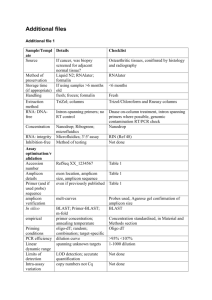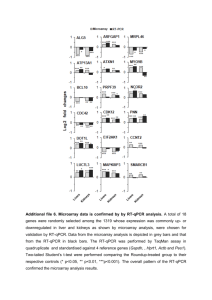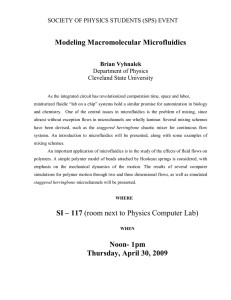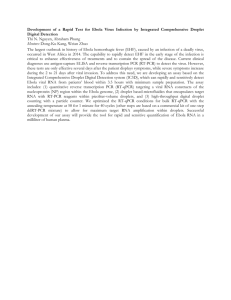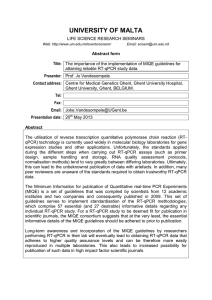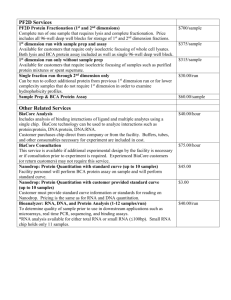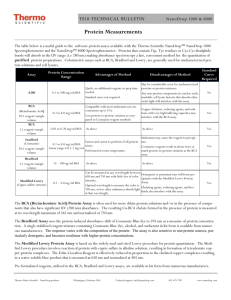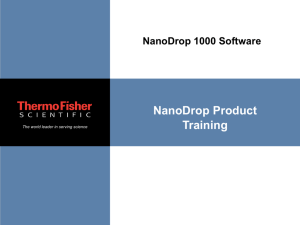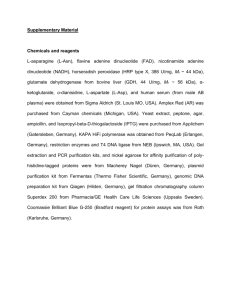Additional file 1
advertisement
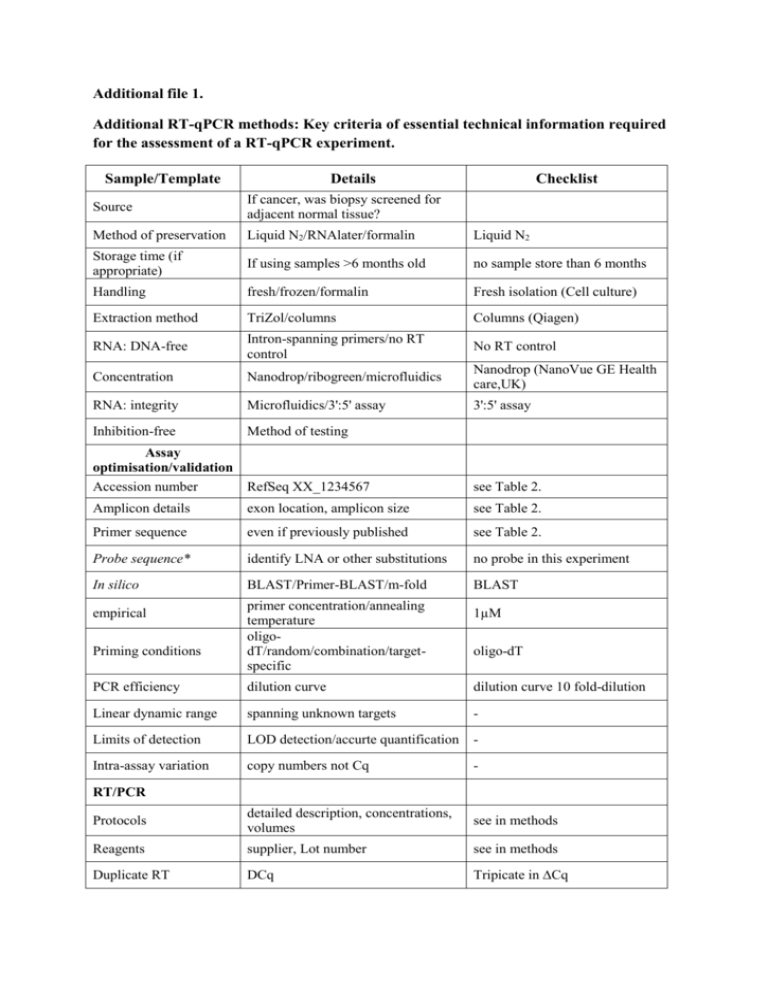
Additional file 1. Additional RT-qPCR methods: Key criteria of essential technical information required for the assessment of a RT-qPCR experiment. Sample/Template Details Checklist Source If cancer, was biopsy screened for adjacent normal tissue? Method of preservation Liquid N2/RNAlater/formalin Liquid N2 Storage time (if appropriate) If using samples >6 months old no sample store than 6 months Handling fresh/frozen/formalin Fresh isolation (Cell culture) Extraction method TriZol/columns Columns (Qiagen) RNA: DNA-free Intron-spanning primers/no RT control No RT control Concentration Nanodrop/ribogreen/microfluidics Nanodrop (NanoVue GE Health care,UK) RNA: integrity Microfluidics/3':5' assay 3':5' assay Inhibition-free Method of testing Assay optimisation/validation Accession number RefSeq XX_1234567 see Table 2. Amplicon details exon location, amplicon size see Table 2. Primer sequence even if previously published see Table 2. Probe sequence* identify LNA or other substitutions no probe in this experiment In silico BLAST/Primer-BLAST/m-fold BLAST empirical Priming conditions primer concentration/annealing temperature oligodT/random/combination/targetspecific 1µM oligo-dT PCR efficiency dilution curve dilution curve 10 fold-dilution Linear dynamic range spanning unknown targets - Limits of detection LOD detection/accurte quantification - Intra-assay variation copy numbers not Cq - Protocols detailed description, concentrations, volumes see in methods Reagents supplier, Lot number see in methods Duplicate RT DCq Tripicate in ∆Cq RT/PCR NTC Cq & melt curves Cq, melt cure and gel electrophoresis NAC DCq beginning:end of qPCR ∆Cq 3:40 Positive control inter-run calibrators Positive control in some gene (1.2 kb Kanamycin) Data analysis Specialist software e.g., QBAsePlus Statistical justification e.g., biological replicates Transparent, validated normalisation e.g., GeNorm summary Sequence Detection Software (SDS v2.1) Applied Biosystems mean ± SD, Biological tripication -
